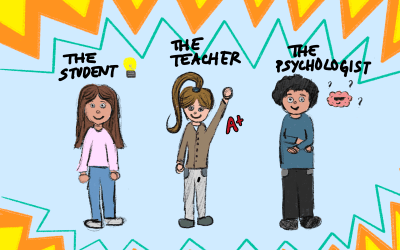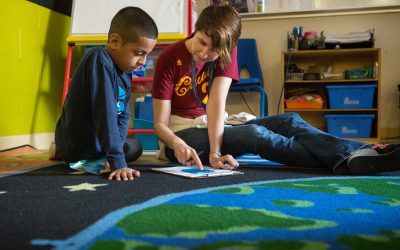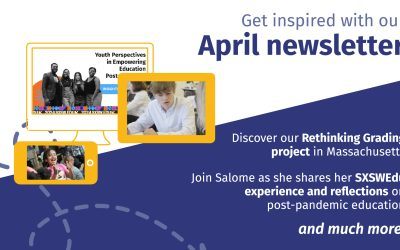The day I stopped handing out packets of questions for students to answer at the end of each chapter of the novels I assigned my teaching changed.
- I am remembering to ask questions.
- I am remembering to ask a variety of questions.
- I am remembering to ask deep questions (using the question stems if I need help).
- I am regularly revisiting my questions to see if the answers have changed based on new information.
- I am asking myself, “Is this question still important?”
So, here’s a question for you: How do you provide opportunities for students to take control of their own learning by asking and exploring their own questions? Try one of the activities above–or any other in our collection of questioning activities—and let me know how it goes!
ABOUT GUEST AUTHOR JON ALTBERGS
In his first professional life, Jon was an English, Social Studies, and (occasional) Computer Education teacher in rural schools. In his second life, he worked variously as an AP, Dean of Students, Data Specialist, and Curriculum Coordinator. In his (current) third life, he is a member of reDesign’s design and knowledge building team. In real life, he lives in the woods of New Hampshire with his two sons, one wife, and two cats.
Join the community!
Sign up to receive our newsletter, access best-of educational resources, and stay in the know on upcoming events and learning opportunities. We hope to see you soon!
- Determine what we know, usually by noting what the text explicitly says or by making observations
- Ask questions
- Sort, evaluate, and deepen questions
- Answer the questions you decide are most important by citing the text or using other meaning-making strategies, such as inferring or connecting
- Revisit our previous responses in light of our developing understanding, revising, rethinking, or deepening them
- Repeat, because good questions lead to more questions
I’d like to say that all my students left my classroom as confident questioners, but I doubt that is true. I am sure that I didn’t do enough to model, to provide independent practice, or to encourage all students to develop their metacognition by thinking about their questions and how they helped them to make meaning. I suggest the activities below as a means of purposefully developing students’ questioning skills.
6 Activities to support students in finding and asking their own powerful question
Beginning a unit with a photo drop is a terrific way to activate student background knowledge and get students thinking and, most importantly, asking questions about a topic before they even open a book or read an article. The activity supports teacher modeling and think alouds—because there’s no article to read, you can quickly move from modeling with one photograph to guided practice with another and independent practice with a third.
A couple of things to keep in mind as you use this activity:
- Because in this context we want to focus on questioning, be sure to model recording what the photograph actually shows and avoiding making inferences about what you see. As Joe Friday said, ‘just the facts, ma’am.’
- Through the course of your modeling and guided practice, you can help students to develop an anchor chart of question stems they can refer to if they get stuck.
Sort and Evaluate Questions: Three Types of QuestionsThere are lots of different ways to sort questions, such as Costa’s framework or Bloom’s Taxonomy and either or both should be part of your repertoire. However, when working with students who may not yet be adept at developing their own questions, Three Types of Questions provides a simple and accessible place to begin teaching the skill of sorting, evaluating, and deepening questions.
Deepen Questions: Guided Peer Questions and Guided Self-Questioning
The sentence stems that accompany these activities provide students with a powerful model of deep questions, which they can then use to develop their own deep questions as they read. Working collaboratively and then independently gradually releases responsibility for questioning to students. You’ll want to be sure that students understand that they won’t be responsible for answering all of these questions: this is a new approach: we are exploring their questions, their interests, they have to ask many questions to identify the few that compel them. And, in fact, as they read increasingly sophisticated texts, they will find that authors and texts often leave the best questions unanswered. When you use this activity, be sure to give plenty of time to the reflection questions.

Answer Important Questions: Author Interview
While answering questions is relies on close reading and problem-solving, rather than on the skill of questioning itself, the Author Interview activity bridges the gap. Students develop higher-level, open-ended questions about the author’s purpose, then answer their own questions from the point of view of the author. While the activity describes using a narrative text, it can be adapted for use with a wide array of texts.

Revisit to Revise and Rethink: Reading Check-Ins and Checklists
As we read, our understanding of a text changes, and questions we had are answered–or no longer seem as important as they once did. You’ll want to be sure that as you use think alouds to share your own metacognition and noticings while you read, that you call attention to those moments, especially of students aren’t aware of them themselves. For example, when reading Of Mice and Men, two questions were always raised, usually by several students: Why do Lenny and George travel around together? And What happened to Lennie? As they read the novel, they discovered that the answers the novel initially provides are lies: we are told George and Lenny are cousins and that Lenny was kicked in the head by a horse. But neither is true, and my students had much to say about these discoveries.
As students develop the habit of revisiting their earlier questions and monitoring their developing understanding, a simple adaptation of the Reading Check-Ins and Checklists can provide a structure to ensure that students take the time to reflect. You can use the following statements in place of those in the activity, or develop your own:
- I am remembering to ask questions.
- I am remembering to ask a variety of questions.
- I am remembering to ask deep questions (using the question stems if I need help).
- I am regularly revisiting my questions to see if the answers have changed based on new information.
- I am asking myself, “Is this question still important?”
So, here’s a question for you: How do you provide opportunities for students to take control of their own learning by asking and exploring their own questions? Try one of the activities above–or any other in our collection of questioning activities—and let me know how it goes!
ABOUT GUEST AUTHOR JON ALTBERGS
In his first professional life, Jon was an English, Social Studies, and (occasional) Computer Education teacher in rural schools. In his second life, he worked variously as an AP, Dean of Students, Data Specialist, and Curriculum Coordinator. In his (current) third life, he is a member of reDesign’s design and knowledge building team. In real life, he lives in the woods of New Hampshire with his two sons, one wife, and two cats.
[/et_pb_text][/et_pb_column][/et_pb_row]Join the community!
Sign up to receive our newsletter, access best-of educational resources, and stay in the know on upcoming events and learning opportunities. We hope to see you soon!
We Make the Road by Walking by Myles Horton, who founded the Highlander Folk School, and Paulo Freire, who is best know for his work The Pedagogy of the Oppressed, was the first book that made me think deeply about how questions are used in schools. As a pre-service teacher in a rural community, I didn’t appreciate the political implications of asking questions at the time. But I was intrigued by the idea of sharing the responsibility for asking questions with students, and the possibility of handing it over to them entirely. My most pressing question, though, was how?
Never spend another Sunday night making up packets of questions
It took me a handful of years of preparing packets of questions for students to answer at the end of each chapter of a novel—or when they completed a short story—to finally take the leap. I’d like to say that I was motivated by a deeply-held conviction about pedagogy, but that wasn’t the case—I was just tired of spending so much of my time preparing materials that my students hated completing, I hated grading, and frankly were a waste of everyone’s time.
And something amazing happened: my teaching radically changed and my students were more engaged. I discovered that given the opportunity, my students could and would ask many of the same questions I myself would have posed and—more importantly—asked many more that I never would have thought of, their questions revealing their unique perspectives and understandings.
Take Time
It took time to feel comfortable that I had begun to answer that nagging question from my graduate school days: How do I share with my students responsibility for asking questions? I discovered that while letting go of my role as question-asker-in-chief was the first step, it wasn’t the whole answer. Many of my students were not confident questioners, especially those with significant skill gaps or distrust of school. They often held misconceptions about questions that needed to be addressed.
First, they associated asking questions with unpreparedness, unsophistication, unknowing: not knowing the answer exposed them, posing a question was an invitation for attack. They, like all of us, had experienced the disapproval of peers and teachers when they asked ‘stupid’ questions or revealed through their question that they alone didn’t know something that ‘everyone knows.’
My students were caught in the double-bind that leads to marginalization and exclusion–ask a question when you don’t know something…but don’t ask questions because then you reveal what you don’t know.
Second, though they had been asked questions constantly throughout their time in school, most had been low-level questions (remembering/understanding on Bloom’s Taxonomy). They needed supportive scaffolding, such as models and question stems, to ask deep questions, as well as tools and frameworks for thinking about the types of questions they were asking.
Eventually, we worked out a process:
- Determine what we know, usually by noting what the text explicitly says or by making observations
- Ask questions
- Sort, evaluate, and deepen questions
- Answer the questions you decide are most important by citing the text or using other meaning-making strategies, such as inferring or connecting
- Revisit our previous responses in light of our developing understanding, revising, rethinking, or deepening them
- Repeat, because good questions lead to more questions
I’d like to say that all my students left my classroom as confident questioners, but I doubt that is true. I am sure that I didn’t do enough to model, to provide independent practice, or to encourage all students to develop their metacognition by thinking about their questions and how they helped them to make meaning. I suggest the activities below as a means of purposefully developing students’ questioning skills.
6 Activities to support students in finding and asking their own powerful question
Determine What We Know and Ask Questions: Photo Drop
Beginning a unit with a photo drop is a terrific way to activate student background knowledge and get students thinking and, most importantly, asking questions about a topic before they even open a book or read an article. The activity supports teacher modeling and think alouds—because there’s no article to read, you can quickly move from modeling with one photograph to guided practice with another and independent practice with a third.
A couple of things to keep in mind as you use this activity:
- Because in this context we want to focus on questioning, be sure to model recording what the photograph actually shows and avoiding making inferences about what you see. As Joe Friday said, ‘just the facts, ma’am.’
- Through the course of your modeling and guided practice, you can help students to develop an anchor chart of question stems they can refer to if they get stuck.
Sort and Evaluate Questions: Three Types of QuestionsThere are lots of different ways to sort questions, such as Costa’s framework or Bloom’s Taxonomy and either or both should be part of your repertoire. However, when working with students who may not yet be adept at developing their own questions, Three Types of Questions provides a simple and accessible place to begin teaching the skill of sorting, evaluating, and deepening questions.
Deepen Questions: Guided Peer Questions and Guided Self-Questioning
The sentence stems that accompany these activities provide students with a powerful model of deep questions, which they can then use to develop their own deep questions as they read. Working collaboratively and then independently gradually releases responsibility for questioning to students. You’ll want to be sure that students understand that they won’t be responsible for answering all of these questions: this is a new approach: we are exploring their questions, their interests, they have to ask many questions to identify the few that compel them. And, in fact, as they read increasingly sophisticated texts, they will find that authors and texts often leave the best questions unanswered. When you use this activity, be sure to give plenty of time to the reflection questions.

Answer Important Questions: Author Interview
While answering questions is relies on close reading and problem-solving, rather than on the skill of questioning itself, the Author Interview activity bridges the gap. Students develop higher-level, open-ended questions about the author’s purpose, then answer their own questions from the point of view of the author. While the activity describes using a narrative text, it can be adapted for use with a wide array of texts.

Revisit to Revise and Rethink: Reading Check-Ins and Checklists
As we read, our understanding of a text changes, and questions we had are answered–or no longer seem as important as they once did. You’ll want to be sure that as you use think alouds to share your own metacognition and noticings while you read, that you call attention to those moments, especially of students aren’t aware of them themselves. For example, when reading Of Mice and Men, two questions were always raised, usually by several students: Why do Lenny and George travel around together? And What happened to Lennie? As they read the novel, they discovered that the answers the novel initially provides are lies: we are told George and Lenny are cousins and that Lenny was kicked in the head by a horse. But neither is true, and my students had much to say about these discoveries.
As students develop the habit of revisiting their earlier questions and monitoring their developing understanding, a simple adaptation of the Reading Check-Ins and Checklists can provide a structure to ensure that students take the time to reflect. You can use the following statements in place of those in the activity, or develop your own:
- I am remembering to ask questions.
- I am remembering to ask a variety of questions.
- I am remembering to ask deep questions (using the question stems if I need help).
- I am regularly revisiting my questions to see if the answers have changed based on new information.
- I am asking myself, “Is this question still important?”
So, here’s a question for you: How do you provide opportunities for students to take control of their own learning by asking and exploring their own questions? Try one of the activities above–or any other in our collection of questioning activities—and let me know how it goes!
ABOUT GUEST AUTHOR JON ALTBERGS
In his first professional life, Jon was an English, Social Studies, and (occasional) Computer Education teacher in rural schools. In his second life, he worked variously as an AP, Dean of Students, Data Specialist, and Curriculum Coordinator. In his (current) third life, he is a member of reDesign’s design and knowledge building team. In real life, he lives in the woods of New Hampshire with his two sons, one wife, and two cats.
[/et_pb_text][/et_pb_column][/et_pb_row]Join the community!
Sign up to receive our newsletter, access best-of educational resources, and stay in the know on upcoming events and learning opportunities. We hope to see you soon!




